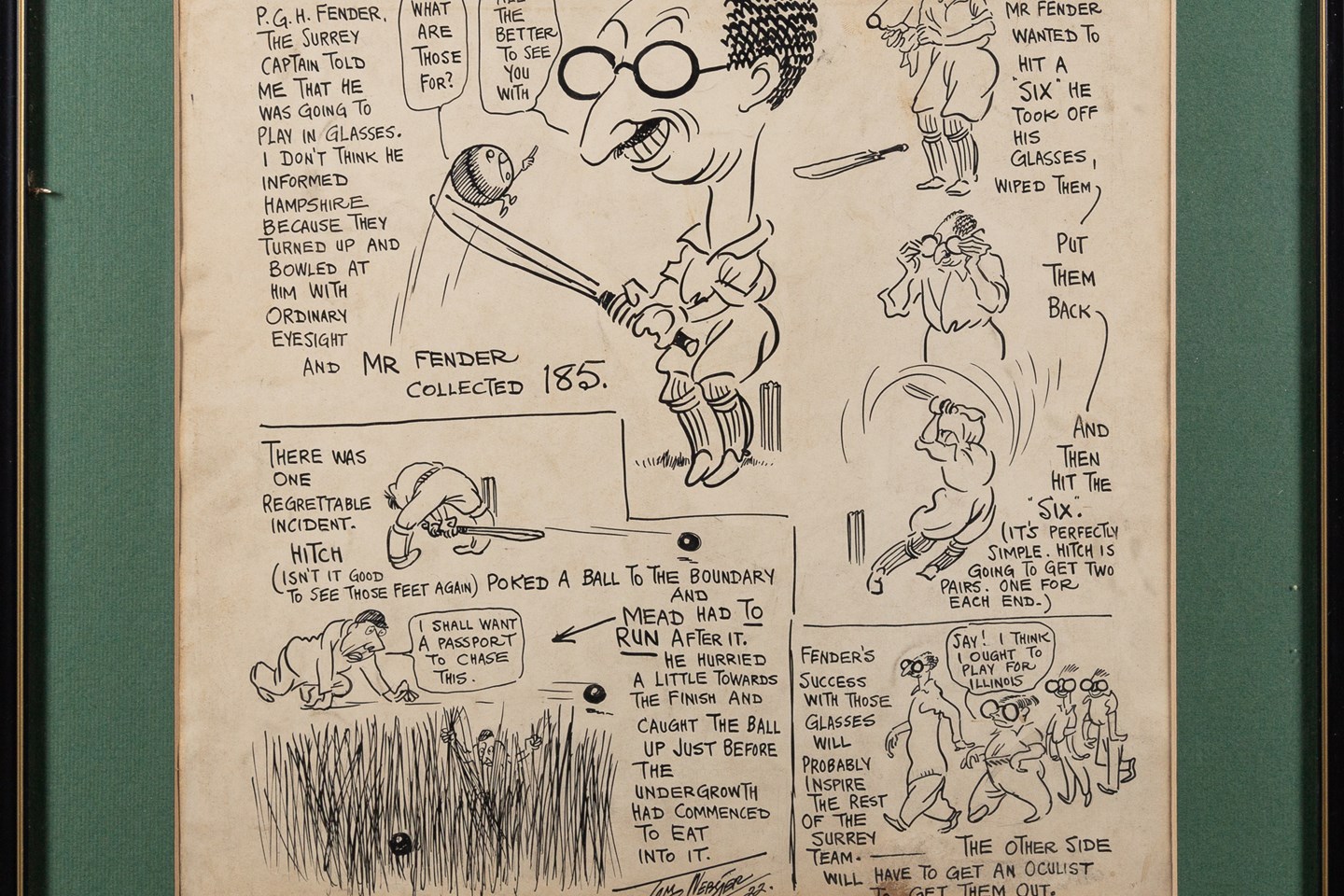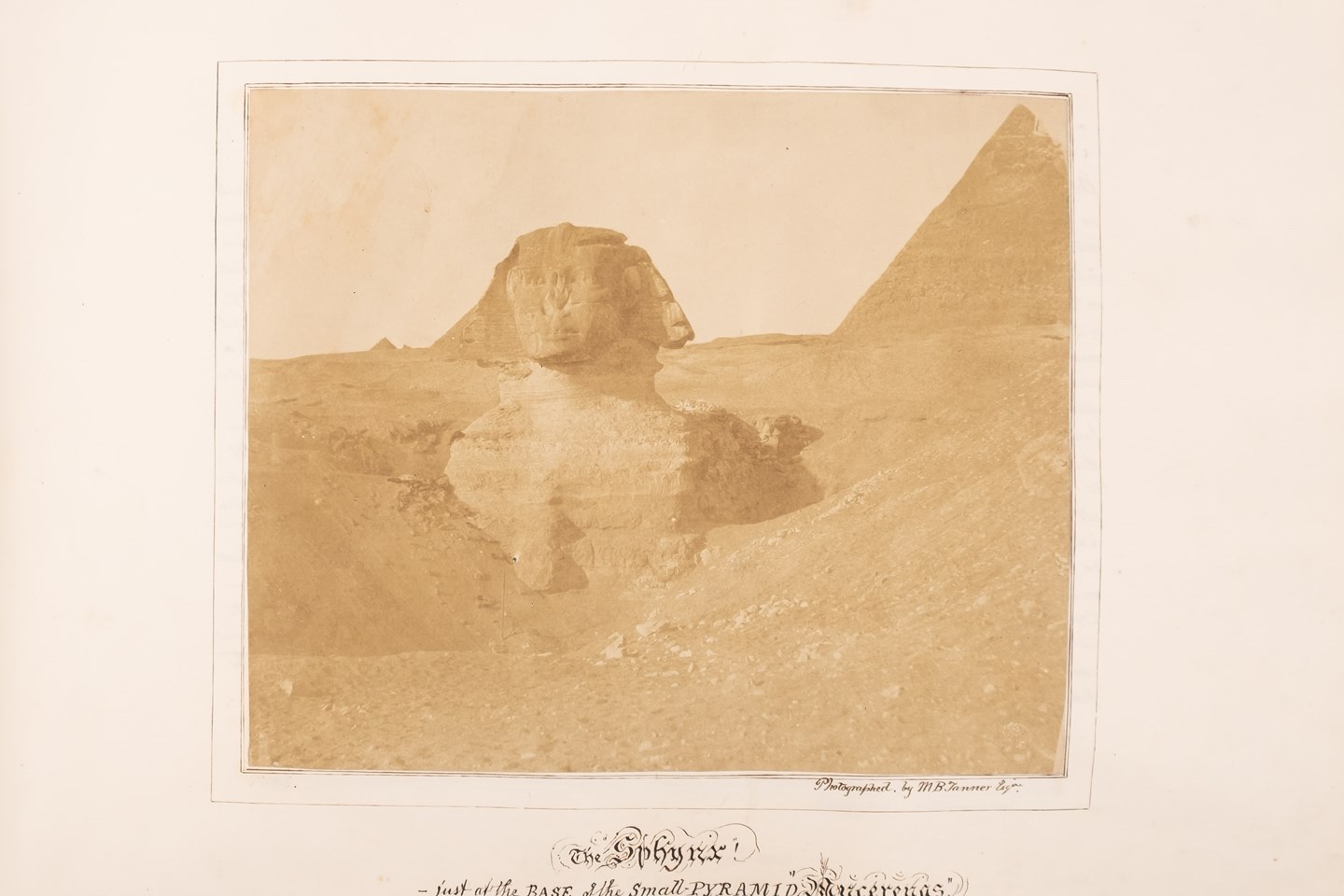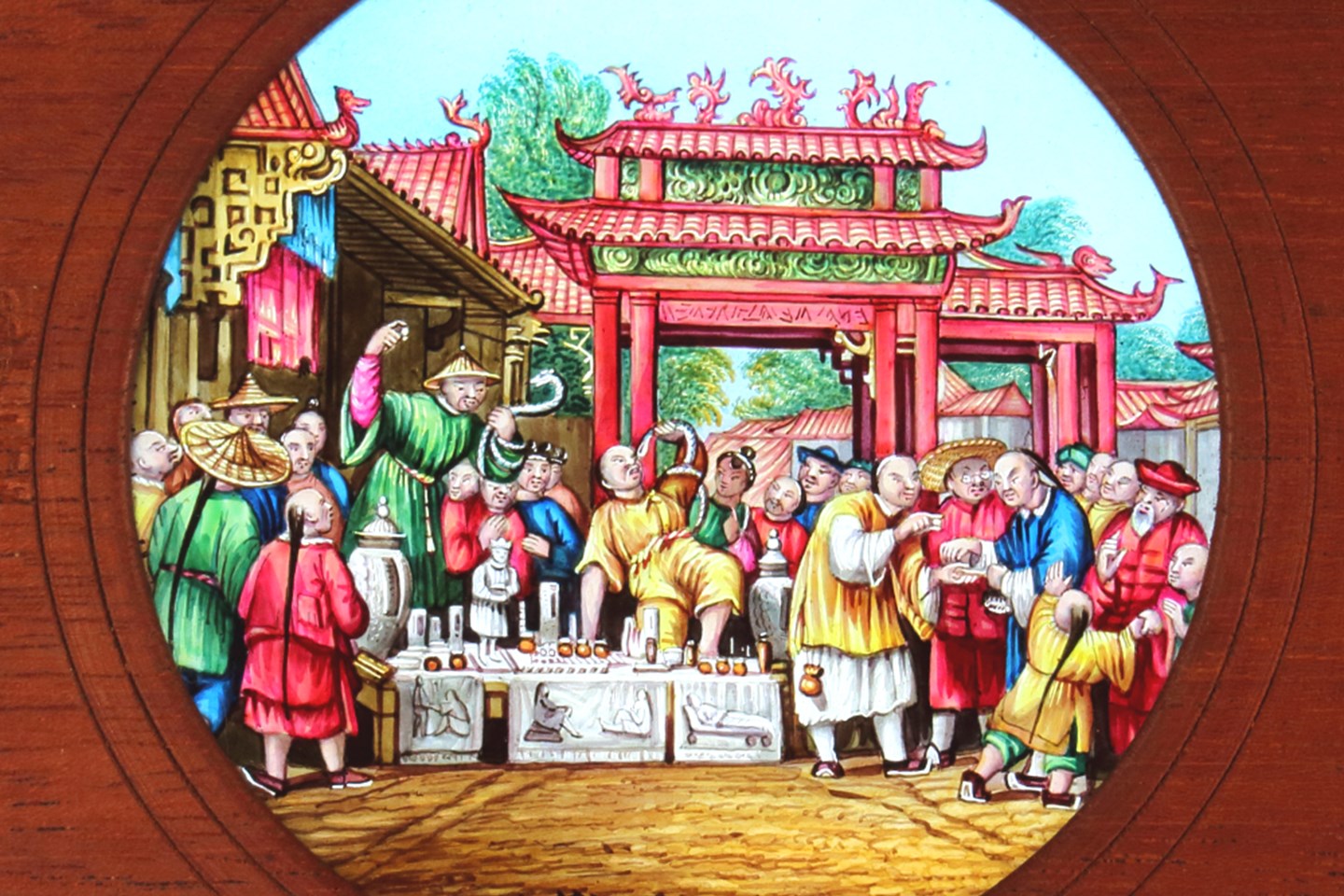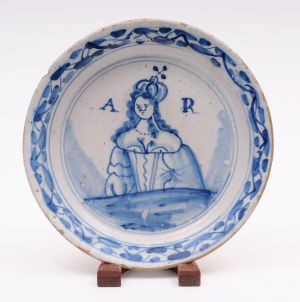
An English delft royal commemorative plate for the reign of Queen Anne.
Apart from being a physical record of an event, one has to ask why does this loosely related group we call commemorative ceramics exist and why are they collected? One could get philosophical about it, but perhaps it is simply because they are readily available and are aesthetically pleasing objects.
However, the most pressing reason is that they offer a sense of belonging, civic pride or attachment to a wider community whether political, sporting or monarchical. Commemorative ceramics act like a badge saying this is me and these are my people. This is certainly not a new sentiment as some of the earliest pieces were made by London delft potters to celebrate the Restoration of Charles II in 1661 and frankly there hasn't been a royal who hasn't appeared on clay since.
But pottery can also be dangerous. Take for instance the Jackfield ale jug adorned with a portrait of Charles Edward Stuart, or Bonnie Prince Charlie as he is more widely known, flanked by inflammatory banners stating 'May the tenants be ready', 'When the Stuarts come' and Down with the rumps'. As Pretender to the English throne, he led a failed uprising in Scotland. Ownership in the 1740s would have been a treasonable act meaning the jug could only be used in secret and judging by it's wear, this was pretty often.
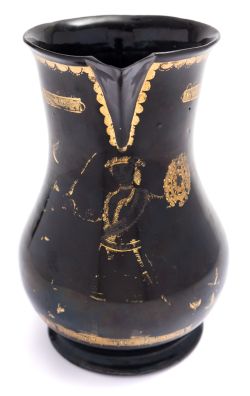
A Jacobite commemorative jug with anti-establishment banners and a portrait of Bonnie Prince Charlie.
Commemorative ceramics can also reference groups one doesn't want to be part of. At first glance, the verse inside a pearlware punchbowl, dating from the 1790s, looks a little opaque. Unlike the previous jug, it certainly wishes the King (George III) well and threatens those who refuse to toast his health, but why keep him 'From Democratic Wolves'? It is a reference to the other side of the Channel: they are Anti Revolutionary sentiments. The Swansea potters were less subtle with their jug entitled Bonaparte Dethron'd, dated April Fool's Day 1814, it is plastered with cartoon images of Napoleon's demise, including the Devil calling from flames 'Come, come thou hast been a most dutiful child' and a street urchin asking where he is going, only to be told 'To El-ba'.
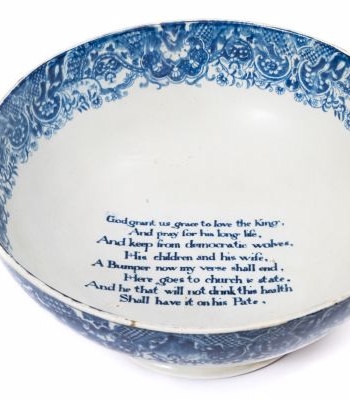
A Staffordshire perarlware punchbowl commemorating King George III and cautioning against the spread of French Revolutionary sentiments.
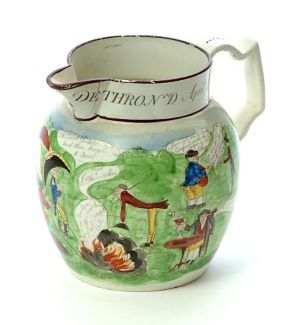
A Cambrian Pottery political commemorative jug satirising the demise of Napoleon.
Commemorative china can also be used to mark a historic event telling others 'I was there'. If you had spent a tidy sum taking the family for a trip to see the Great Exhibition of the Works of Industry of All Nations in 1851, why wouldn't you spend a shilling for a keep sake of the Crystal Palace?
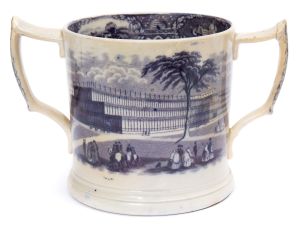
A pottery loving cup by an unknown maker commemorating the 1851 Great Exhibition.
Conversely, there are also events that tell others that you remember a day you'd rather forget. In this category, there is a rare Dutch delft plate that commemorates the great earthquake of 18th September 1692. It simply states that on that date an earthquake was felt everywhere, some genuinely thought it was Divine Wrath as large swathes of the low country were flooded and the tremors were felt in parts of Germany, Belgium, France and even Kent and East Anglia.
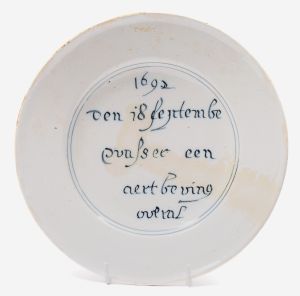
An early Dutch delft disaster commemorative plate for the 1692 earthquake.
Bizarrely, there are also commemorative pottery for events that never happened! Such is the case with a jug by an unknown maker in 1837 that is captioned Victoria Review. On it, the newly crowned Queen is on horseback inspecting ranks of parading soldiers. As part of her coronation celebrations, a military review was scheduled, but a dispute with the Prime Minister about whether it was safe for Her Majesty to ride led to its cancellation.
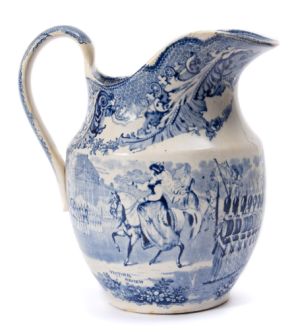
Victoria Review a commemorative pottery jug for an event that never happened.
One wonders whether the fact that the maker of this particular jug is unknown suggests that a large stock of worthless jugs led to their demise – it would be little comfort to them to know that these now change hands for £100s.
The final group worthy of mention are those that record disasters. Of course, these are seared on the minds of those involved, so were not intended for the 'I was there' market that would be plain ghoulish.
No one would want to celebrate the Sheffield Floods of 1864, the 1877 collapse of Widcombe Bridge, Bath or the sinking of the Titanic in 1912 with all the resulting loss and hardship associated with each event, but all are commemorated in pottery.
That is because they were a charitable response sold to assist survivors and their families and by far the most common in this group were not for Acts of God, but for industrial disasters. Most were produced quickly by commercial potteries but still retained the dignified look of the finished article about them.
I thought it poignant to finish with a plate that records the Wattstown Colliery explosion in which 121 men and 8 boys perished in 1905. As you can see from the image, it lacks finesse but as an immediate response from somebody who just wanted to help, I defy anybody not to be moved by it.
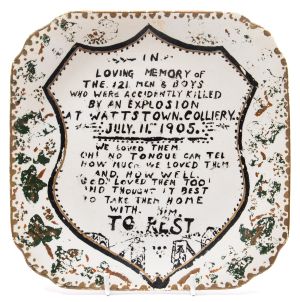
An personal response commemorating the Wattstown Colliery Disaster of 1905.
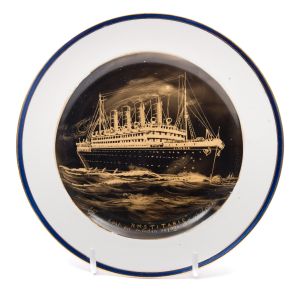
A Booths Pottery blank decorated as a fund raising response to the loss of the Titanic.
- Bearnes Hampton & Littlewood
- Commemorative Ceramics
Commemorative Ceramics was written on Tuesday, 2nd May 2017.











